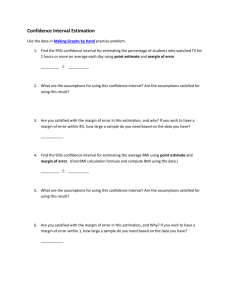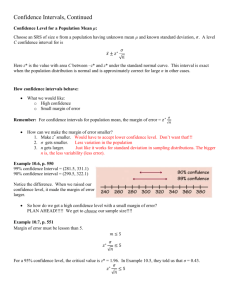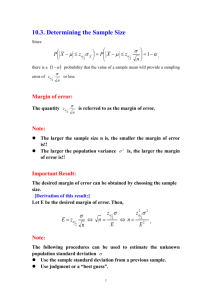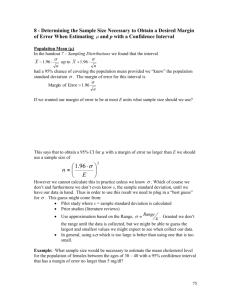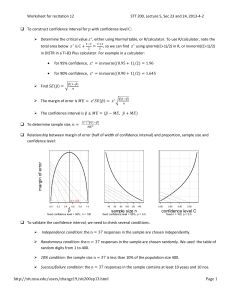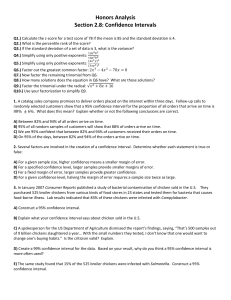Confidence Intervals Homework: Margin of Error & Sample Size
advertisement
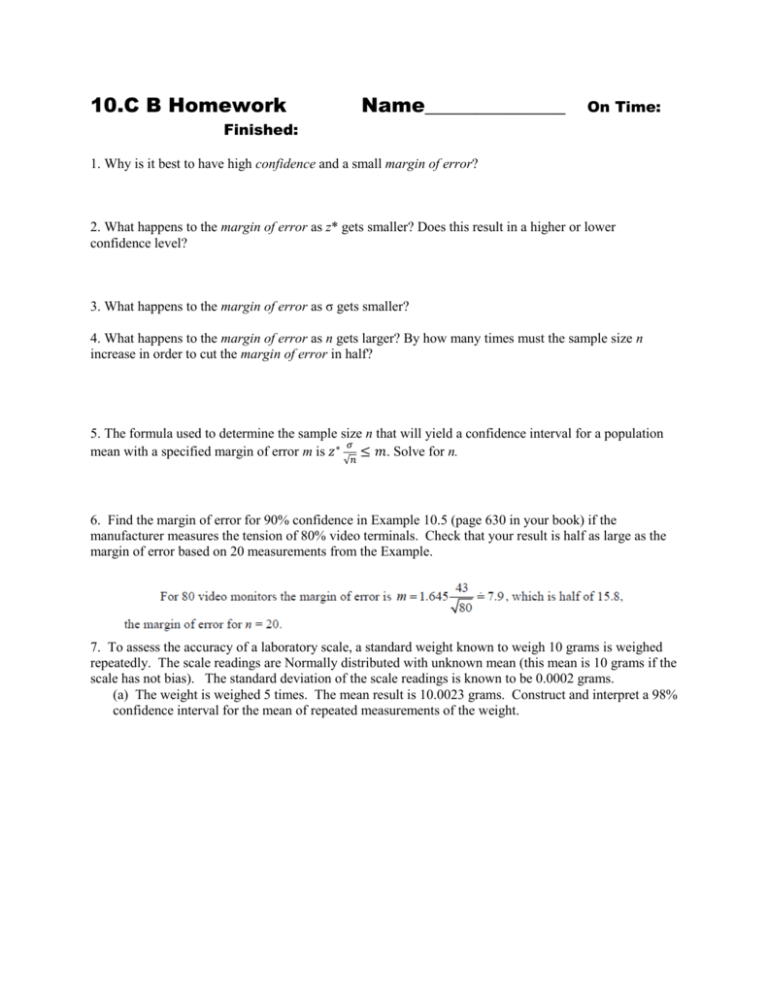
10.C B Homework Name______________ On Time: Finished: 1. Why is it best to have high confidence and a small margin of error? 2. What happens to the margin of error as z* gets smaller? Does this result in a higher or lower confidence level? 3. What happens to the margin of error as σ gets smaller? 4. What happens to the margin of error as n gets larger? By how many times must the sample size n increase in order to cut the margin of error in half? 5. The formula used to determine the sample size n that will yield a confidence interval for a population 𝜎 mean with a specified margin of error m is 𝑧 ∗ 𝑛 ≤ 𝑚. Solve for n. √ 6. Find the margin of error for 90% confidence in Example 10.5 (page 630 in your book) if the manufacturer measures the tension of 80% video terminals. Check that your result is half as large as the margin of error based on 20 measurements from the Example. 7. To assess the accuracy of a laboratory scale, a standard weight known to weigh 10 grams is weighed repeatedly. The scale readings are Normally distributed with unknown mean (this mean is 10 grams if the scale has not bias). The standard deviation of the scale readings is known to be 0.0002 grams. (a) The weight is weighed 5 times. The mean result is 10.0023 grams. Construct and interpret a 98% confidence interval for the mean of repeated measurements of the weight. (b) How many measurements must be averaged to get a margin of error of ±0.0001 with 98% confidence? Show your work. 8. High school students who take the SAT Mathematics exam a second time generally score higher than on their first try. The change in score has a Normal Distribution with a standard deviation 𝜎 = 50. A random sample of 1000 students gain an average of 𝑥̅ = 22 points on their second try. (a) Construct and interpret a 95% confidence interval for the mean score gain 𝜇 in the population. (b) Calculate the 90% and 99% confidence intervals for 𝜇. (c) Make a sketch like figure 10.9 (Page 634 in your book) to compare these three intervals. How does increasing the confidence level affect the length of the confidence interval? (d) Suppose that the same result, 𝑥̅ = 22 had come from a sample of 250 students. Calculate the 95% confidence interval for the population mean 𝜇 in this case. (e) Suppose that a sample of 4000 students had produced the sample mean 𝑥̅ = 22. Again compute the 95% confidence interval for 𝜇. (f) What are the margins of error for samples of size 250, 1000, and 4000? How does increasing the sample size affect the margin of error of a confidence interval? (g) How large a sample of high school students would be needed to estimate the mean change in SAT score 𝜇 to within ± 2 points with 95% confidence? Show your work.

